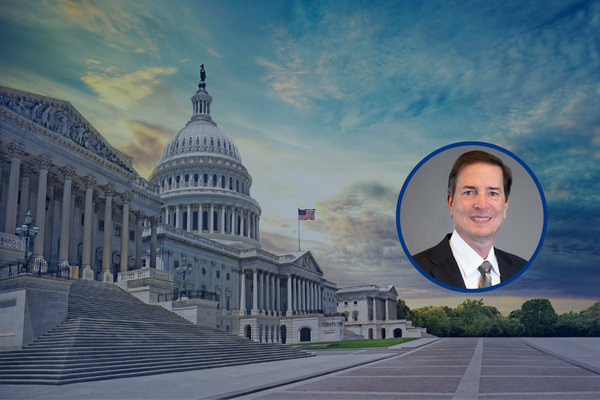
Best Overdraft Practices for Stronger Account Holder Relationships
Categories:
Believe it or not, you’re laying a solid foundation for your account holders’ future by offering a reliable overdraft (or courtesy pay) service. According to a survey from Bankrate, US adults, on average, have held the same checking account for 17.75 years, with adults aged 55 and older keeping the same account for 24.6 years. Many life events can occur during that time, including home purchases, starting a business, building savings, and investing in the long term. These moments are all opportunities for your community financial institution (CFI) to build account holder loyalty.
Are Negative Experiences Costing You Account Holders?
Consumers have more options than ever regarding their banking needs — and there are likely a variety of offers tempting them to switch. A single negative experience with your overdraft service could be the reason that someone walks away. According to PwC’s Future of Customer Experience survey, 32% of customers said all it takes is one bad experience to leave a brand. Even if they have been loyal for a long time, 59% will walk away after two bad experiences.
Community financial institutions that prioritize transparency, fairness, and support in their overdraft programs are better positioned to retain long-term account holders and avoid costly churn. To have the most account-holder-friendly program, you should build the service around and for your account holders.
Your account holders will invariably have unintentional overdrafts; when they do, they may need support. Overdraft programs continue to be a valuable service with 88% of consumers saying they find value in overdraft protection and that there’s an opportunity to fulfill an important need.
Regulatory Pressure and the Need for Overdraft Program Reviews
The FDIC, OCC, and NCUA urge financial institutions to closely examine their overdraft programs. A critical area of focus includes clear disclosures surrounding “authorize positive, settle negative” (AP/SN) transactions and re-presentment fees. Additionally, providing alternative options, such as linking to a savings account, and easy-to-understand choices for avoiding overdraft fees is essential.
A recent report by the CFPB shows that financial institutions are evaluating their overdraft fees. Many of the nation’s largest banks, including Bank of America and Wells Fargo, have made significant changes to their overdraft fee structures, reducing or eliminating specific fees, which is seen as a response to regulatory pressure and account holder advocacy. For instance, Bank of America announced in 2022 that they would reduce their overdraft fees from $35 to $10 and eliminate non-sufficient funds (NSF) fees. Wells Fargo has also made similar moves by eliminating NSF and linked account transfer fees for overdrafts.
Creating a consumer-friendly program starts with reviewing it from the account holder’s perspective, putting their needs first. If you are unsure whether your program meets and exceeds expectations, examining your strategy and determining, if necessary, changes are vital. As major national chains change their overdraft fee programs, you must reassess your program to ensure account holder retention.
Essential Overdraft Practices for Long-Term Success
Evaluating, diagnosing, and implementing improvements is the best way to get your overdraft program back on track. To remain competitive and compliant, while fostering stronger relationships, your overdraft program should include the following:
- Reasonable fees: Setting overdraft fees at a reasonable level builds trust and aligns with both consumer expectations and regulatory guidelines. A fair fee structure can help your institution avoid reputational damage and reduce the risk of regulatory penalties.
- Transparency: Ensure that account holders clearly understand the costs and terms of your overdraft program. Transparent communication fosters trust and improves the likelihood of long-term retention.
- Clear opt-in processes: The CFPB’s recent guidance emphasizes the importance of clear and compliant opt-in practices. Make sure that your institution’s procedures for enrolling account holders in overdraft services are easy to understand and fully compliant with Regulation E.
- Flexible coverage options: Offering Extended Coverage or other customizable options allows account holders to choose a level of overdraft protection that best meets their needs, adding an extra layer of personalization to your service.
- Ongoing communication and education: Regularly engaging account holders about their overdraft options and responsibilities through proactive communication—such as email reminders, in-branch discussions, or digital tools—keeps them informed and helps prevent overdraft situations before they arise.
Having more account-holder-centric account offerings can help you stay ahead of the competition.
Take Action and Future-Proof Your Overdraft Strategy
Redefining your overdraft strategy will ensure you can deliver on your mission to promote financial health and well-being for account holders. These and other best practices can help you provide a responsible overdraft service they can rely on.
When you implement overdraft best practices today, you’re planting the seeds of trust that can grow into stronger loyalty throughout their financial lives.
For more on this topic, check out our webinar, “A Consumer-First Approach to Overdrafts.”
Contact your local representative to learn more about offering a consumer-first overdraft privilege program.
About ADVANTAGE, powered by JMFA
ADVANTAGE is a leading provider of consultation services for credit unions and community banks. With a long-standing 40-year history of excellence, we help our clients navigate the ever-changing financial landscape, providing solutions that give them a competitive advantage.
We help community financial institutions grow non-interest income with account acquisition and deposit growth and overdraft privilege, and save time and money with vendor contract negotiation, and technology strategy and selection.
To subscribe to our news and updates, visit advantage-fi.com/newsletter.




